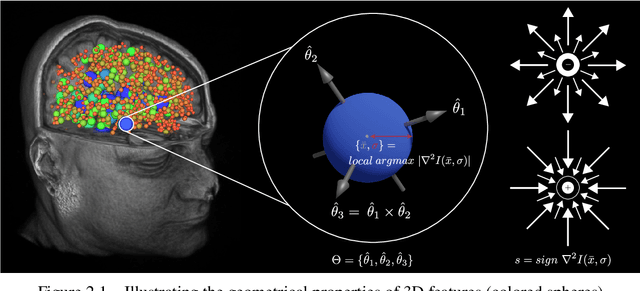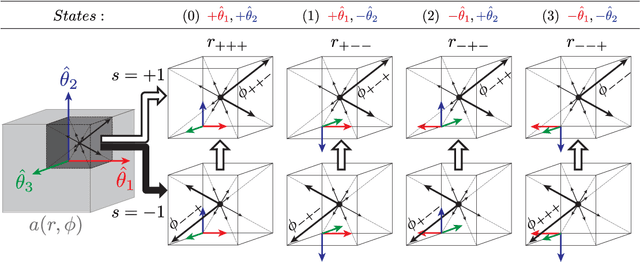Using Atom-Like Local Image Features to Study Human Genetics and Neuroanatomy in Large Sets of 3D Medical Image Volumes
Paper and Code
Aug 25, 2022



The contributions of this thesis stem from technology developed to analyse large sets of volumetric images in terms of atom-like features extracted in 3D image space, following SIFT algorithm in 2D image space. New feature properties are introduced including a binary feature sign, analogous to an electrical charge, and a discrete set of symmetric feature orientation states in 3D space. These new properties are leveraged to extend feature invariance to include the sign inversion and parity (SP) transform, analogous to the charge conjugation and parity (CP) transform between a particle and its antiparticle in quantum mechanics, thereby accounting for local intensity contrast inversion between imaging modalities and axis reflections due to shape symmetry. A novel exponential kernel is proposed to quantify the similarity of a pair of features extracted in different images from their properties including location, scale, orientation, sign and appearance. A novel measure entitled the soft Jaccard is proposed to quantify the similarity of a pair of feature sets based on their overlap or intersection-over-union, where a kernel establishes non-binary or soft equivalence between a pair of feature elements. The soft Jaccard may be used to identify pairs of feature sets extracted from the same individuals or families with high accuracy, and a simple distance threshold led to the surprising discovery of previously unknown individual and family labeling errors in major public neuroimage datasets. A new algorithm is proposed to register or spatially align a pair of feature sets, entitled SIFT Coherent Point Drift (SIFT-CPD), by identifying a transform that maximizes the soft Jaccard between a fixed feature set and a transformed set. SIFT-CPD achieves faster and more accurate registration than the original CPD algorithm based on feature location information alone, in a variety of challenging.
 Add to Chrome
Add to Chrome Add to Firefox
Add to Firefox Add to Edge
Add to Edge